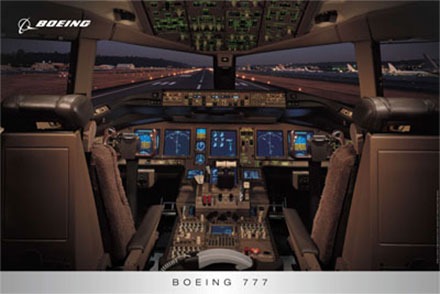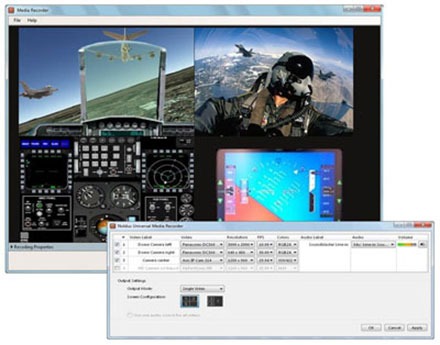Boeing
Embedded Measures human factors lab
Boeing and Noldus Information Technology embarked together on a venture to go where no-one has gone before: a mobile human factors lab of unprecedented capabilities. The Embedded Measures lab (EM lab) is used for measurements of situational awareness and fatigue, along with prototype testing.

The new lab is unique in its integration of video cameras, simulator data, physiological readings, and eye trackers.
Complete integration
The new lab is unique in its integration of multiple modalities. It includes several video cameras, simulator data, physiological readings and two eye trackers. All data can be synchronized and viewed in The Observer XT software provided by Noldus. Integration of data is crucial to successful human factors research. One modality only says so much.
Eye tracking for instance tells what the subject looked at, but only when combined with flight data and simulator images will you know whether he was paying attention to the right cues. Video observations synced with other sources of information provides more in-depth information about the subject’s responses than any single source of response data. You often also need to know the pilot’s mental state, because he may not pick up on cues due to fatigue or mental load. Incorporating physiological measures with performance data can give better insights into the subject’s internal state than performance data alone.
Accurate synchronization is the key to proper data integration. Without it, it is impossible to follow the course of events and to tell causes from effects - a daunting technical challenge. Each recording device has its own clock, and they are rarely in sync. There can be offsets, drift and jitter between the signals that distort the data, and obscure the actual process. In the EM project, this has been overcome by using several sync mechanisms that are built into The Observer XT.
The Observer XT software also offers manual behavior recording, comments, and extensive quantitative analysis. This allows the researchers to make detailed analyses of the frequency, duration, and order of events. Important video and data fragments can be exported for presentation to developers, management or others.
A mobile lab
Boeing has multiple simulators and research projects, and the EM lab needed to seamlessly combine all of them. Therefore, the solution had to be mobile and flexible. The lab can be moved and set up in different locations, and a variety of recording devices can be used. This way the researchers can adapt to whichever simulator they are working at, and optimize the system for their experiment. Photo: Accurate synchronization is the key to proper data integration.

Noldus’ project approach
The EM lab was built around the needs of end users. The core is made of standard off-the-shelf components, and everything is integrated and tested totally fitting user demands and wishes. The project is subdivided into four phases: requirements analysis, design, development, and implementation.
- In the requirements analysis phase, experts from Noldus analyzed the user’s need and translated them into technical system requirements. This was done through on-site visits and interviews.
- In the design phase, the technical requirements were transformed into actual system designs: data flows, technical components, and wiring schemes.
- In the development phase, Noldus’ technicians configured the systems and built additional functionality. Both The Observer XT and the eye tracking software had to be adjusted. The result was tested in-house at Noldus HQ, where technical expertise is concentrated.
- Noldus’ consultants made sure that the lab was installed correctly, and worked according to specifications. This happened on-site.
Working in this structured way had many advantages: It ensured that the system met Boeing’s requirements and that it was properly tested and implemented. After the implementation phase, Noldus’ role is not over. There is technical support, delivered by the local office in Tacoma, WA.
 English
English German
German French
French Italian
Italian Spanish
Spanish Chinese
Chinese